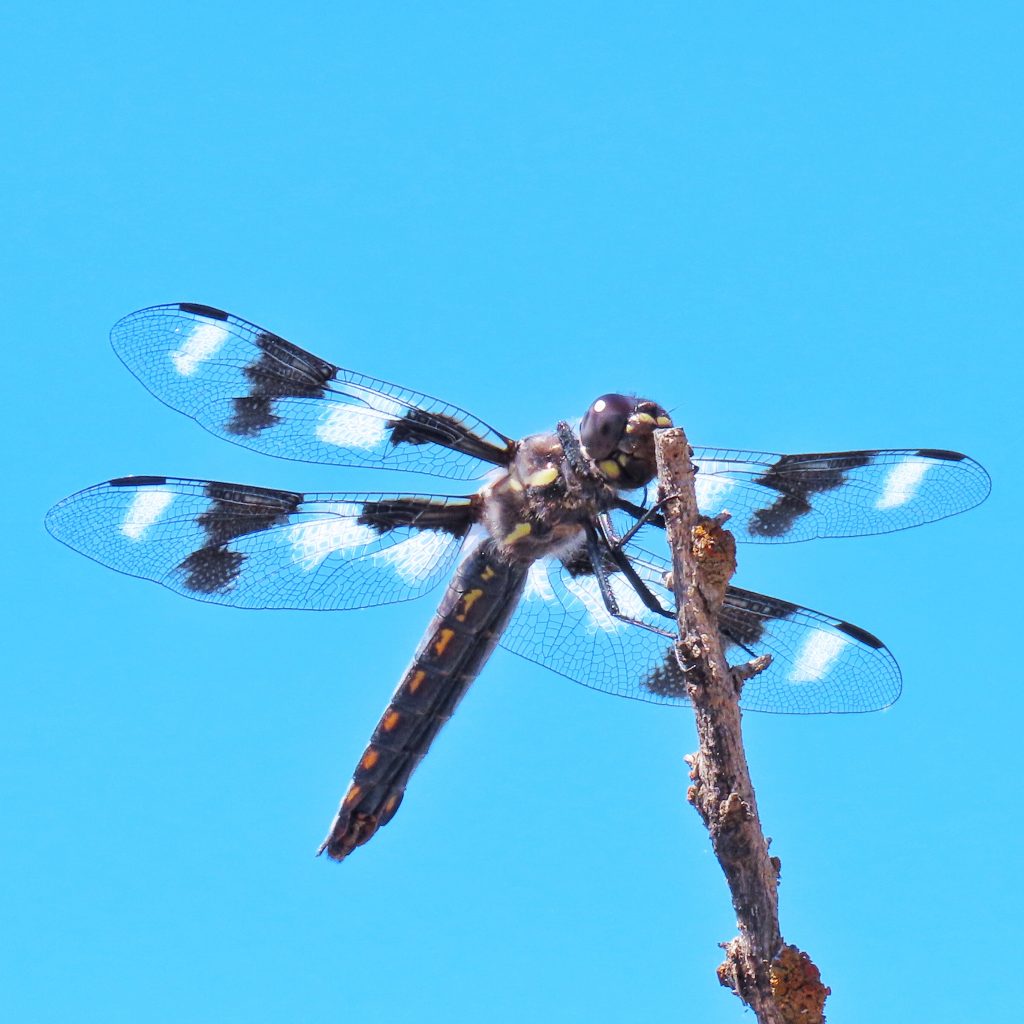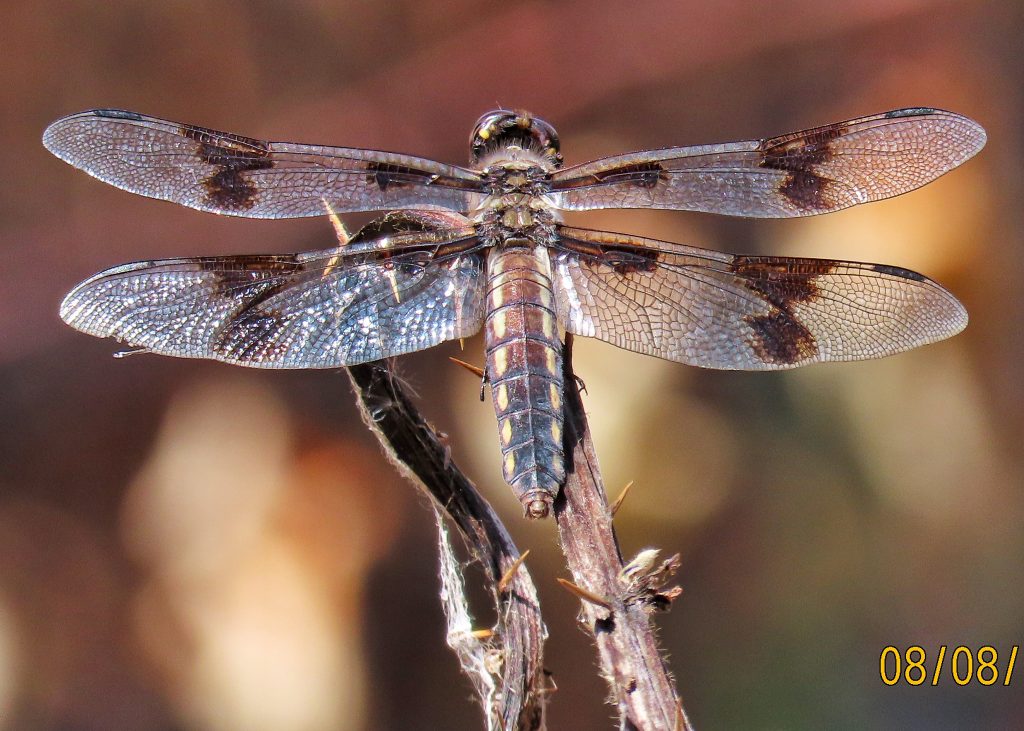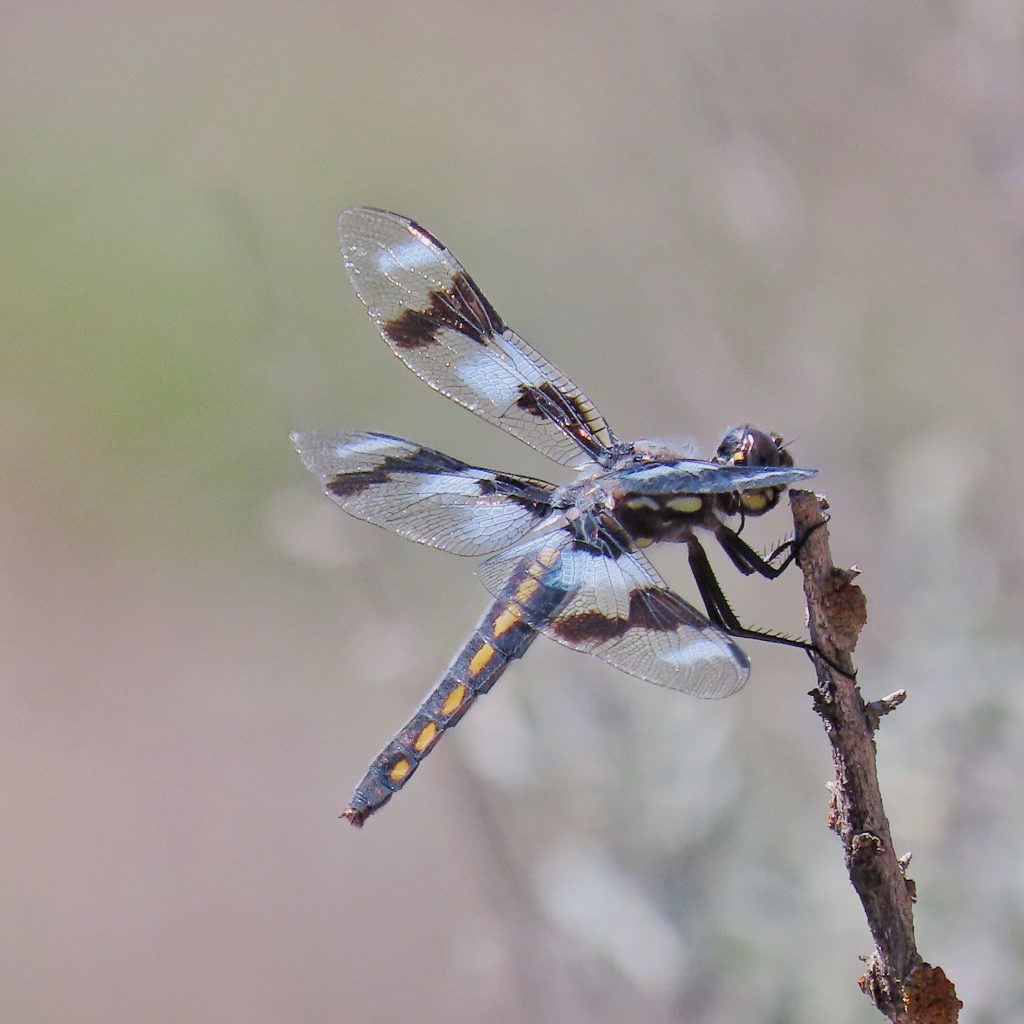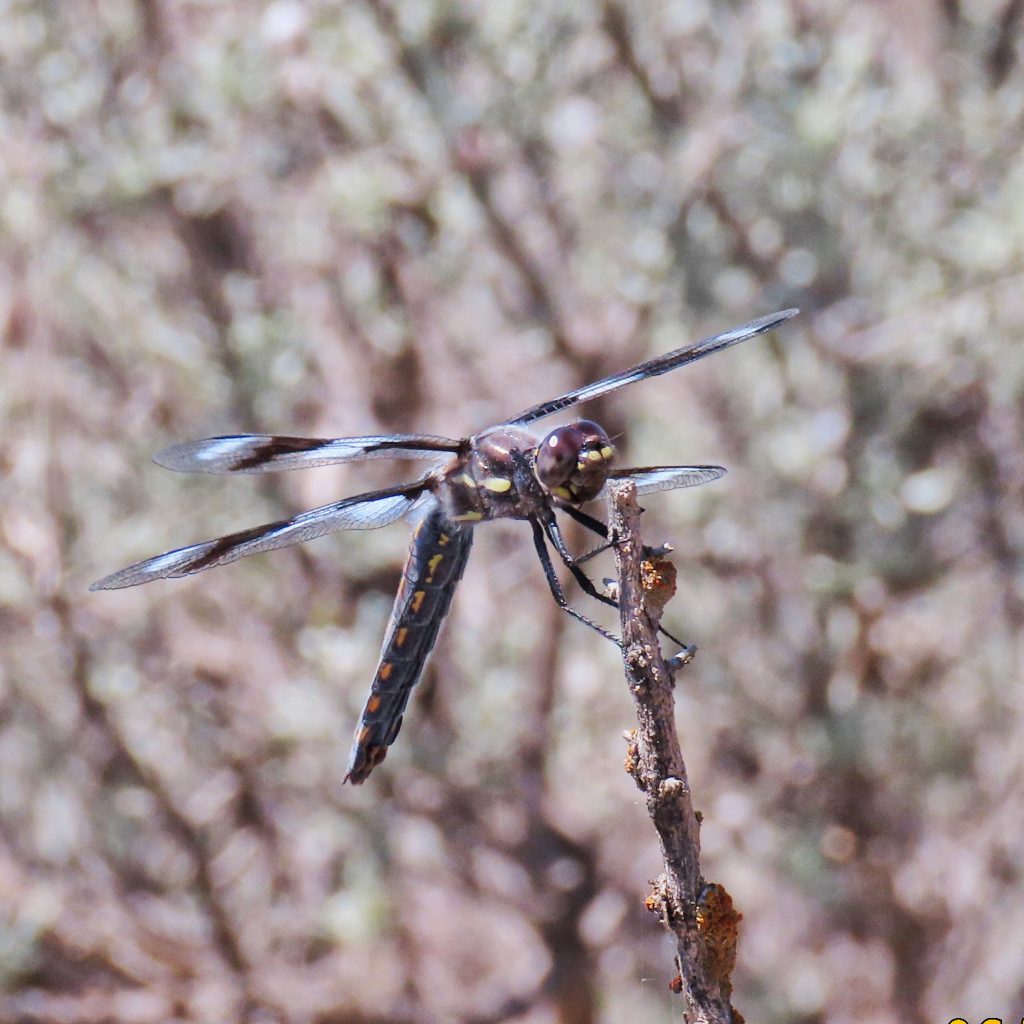
Eight-spotted Skimmers are one of our most common species of dragonfly, found almost everywhere there is still or slow moving water, and are as common in urban areas as the species epithet forensis, which means of the marketplace, would suggest. In the PNW they are absent only from higher elevations in Idaho.
The males are particularly eye catching, their black and white wings seeming to strobe across the landscape. The most similar species, the Twelve-spotted Skimmer (Libellula pulchella), has a dark spot on each wing tip, in addition to the dark wing base and midwing spots they share with the Eight-spotteds. (2 spots X 4 wings=8 spots). Females of the two species can be similarly differentiated on the basis of the presence or absence of wing tip spots, and can be told from the males by their relative lack of pruinosity, the whitish coloring found on the abdomens and between the wing spots of the males.

The males are aggressive about defending whatever area they are occupying, driving off not only conspecific rivals but 12-spotteds, Common Whitetails (Plathemis lydia) and various darners, and don’t seem to have fixed territories. They are frequent perchers on exposed shoreline vegetation while looking for a mate near water, as well as ‘hawking’ from a perch when hunting, which often happens away from water and earlier in the day.
Like most dragonflies both males and females leave their natal area soon after emerging, and travel and hunt extensively until sexually mature.
They are a medium large dragonfly (TL 44-51mm; WS 82-90mm) but seem larger because of the visual impact of their flight. In lower elevations they can usually be found flying by early May, and they often persist into October, although individuals seldom live more than 4 weeks.

http://thedragonflywhisperer.blogspot.com/2017/06/species-spotlight-eight-spotted-skimmer.html?m=1
Size- TL 44-51mm; WS 82-90mm
Habitat- Still and slow moving water with emergent vegetation
Range- Region wide, except for higher elevations in Idaho and Montana
Eats- Anything small enough to subdue
Flight Season- Late April to October
